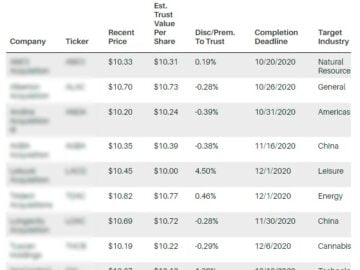Seeking out great stocks to buy is essential, but many would say it’s even more important to know which stocks to steer clear of. A losing stock can eat away at your precious long-term returns. So, figuring out which stocks to trim or get rid of is essential for proper portfolio maintenance.
Even the best gardens need pruning, and our team has spotted a few stocks that seem like prime candidates for selling or avoiding. Continue reading to find out which three stocks our team is staying away from this week.
Medical technology company Medtronic Inc. (MDT) tops our list of stocks to avoid following a rough finish to a fiscal year wrought with turmoil. The company was already struggling to recover from medical device recalls and an FDA warning when China enforced Covid-related lockdowns. During its fiscal fourth quarter of 2022, revenue from China, which accounts for over 40% of the company’s emerging markets revenue, declined 10%.
Medtronic missed on both the top and bottom lines for Q4. Revenue came in at $8.09 billion, 4% below expectations for $8.43 billion. Earnings per share came in at $1.52, which was about 2% off expectations of $1.56.
The medical device maker has also faced higher raw material, labor, and transportation costs, stemming from inflationary and supply-chain challenges. Against this backdrop, the company cautiously lowered its guidance for 2023. Management now expects adjusted earnings for the financial year 2023 of US$5.53 per share to US$5.65 per share, below analysts’ estimates of US$5.82 per share. “Supply chain, inflation, and foreign exchange are expected to create near-term pressure,” commented Medtronic chief financial officer Karen Parkhill.
MDT’s share price has plunged nearly 10% since the May 26th call. Many of the obstacles that sprung up over the past year remain unresolved for the industry and Medtronic. We’re avoiding this stock until concerns abate.
Food delivery leader and pandemic darling DoorDash (DASH) was one of the big winners in the shift to stay-at-home culture. Between 2019 and 2021, DASH revenue increased by 451%, from $885 million to $4.88 billion. But now that the economic reopening is complete, DoorDash’s revenue increases are grinding to a halt. Between the third and fourth quarters of 2021, it experienced growth of just 1.9%.
DASH’s revenue came in at $1.30 billion for the fourth quarter of 2021, up 34% year-over-year. However, its total costs and expenses were up 14% year-over-year at $1.45 billion. Total current liabilities were $1.76 billion for 2021, compared to $1.4 billion for 2020.
The company is expecting $48 to $50 billion in gross order volume in 2022, implying a modest 14% increase from $41.9 billion last year. However, that’s not enough to justify DASH’s lofty valuation. Currently, the stock trades at a price-to-sales multiple of 4.6, expensive compared to top competitors like Uber Technologies (UBER), which trades at a price-to-sales multiple of 2.19 – half that of DASH.
DASH’s EPS is estimated to remain negative in 2022 and 2023. Its EPS is estimated to fall 20.6% for the first quarter. It’s Important to note that the company missed EPS estimates in each trailing four quarters. The stock has declined 53% since the beginning of the year to close Friday’s session at $68.04.
Headwinds against e-commerce car vendor Carvana (CVNA) had already been intensifying before the sizable ramp up to its vehicle inventory in the first quarter. Management recently admitted that it accelerated its car buying business at the wrong time, during a worsening economic environment, causing investors to flee the stock in search of greener pastures. CVNA could continue to burn through cash at an alarming rate as it faces threats to the value of its inventory.
“It has become clear over the past few months that the company is facing serious challenges to the business,” Morgan Stanley analyst Adam Jonas wrote in a note to clients after he downgraded CVNA to Equal Weight from Overweight and slashed the price target by 70% to $105, down from $360. “By the company’s own admission, it had accelerated growth at precisely the wrong time into a consumer slowdown leaving a major mismatch between capacity and demand, creating a liquidity crunch,” he continued.
The company’s liquidity issues are likely to be compounded as the Fed boosts benchmark interest rates, making it more expensive to take out loans. With its business model, Carvana is also at risk of a decline in used car prices as that would devalue its inventory, and a pullback in prices is likely as interest rates rise.
During Carvana’s most recent quarterly announcement on April 20th, the company reported a bigger-than-expected quarterly loss and revenue that beat analyst expectations. Results showed a $1 billion increase in equity along with $3.275 billion in debt. Carvana may look like a bargain, down more than 90% from its December 2021 ATH. Still, with interest rates rising and growing concerns of a looming economic recession, the company could be further wrung out as economic growth slows.









